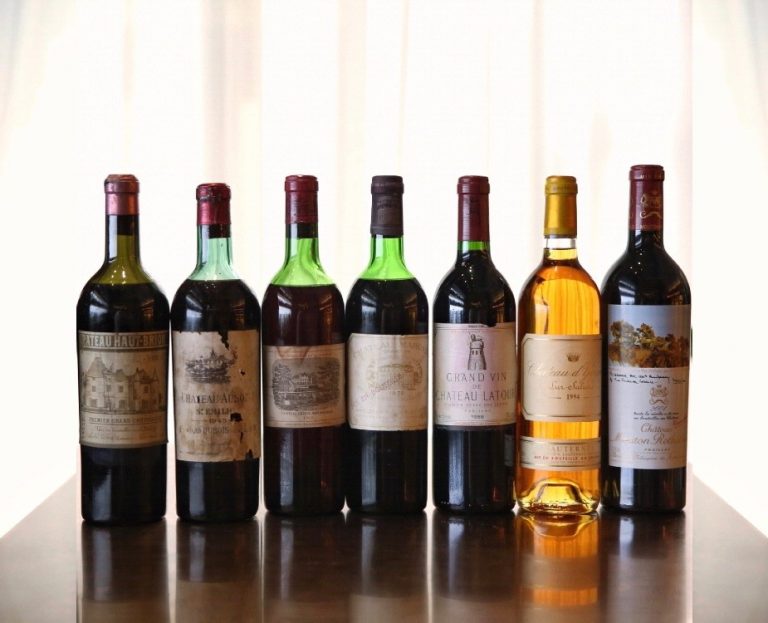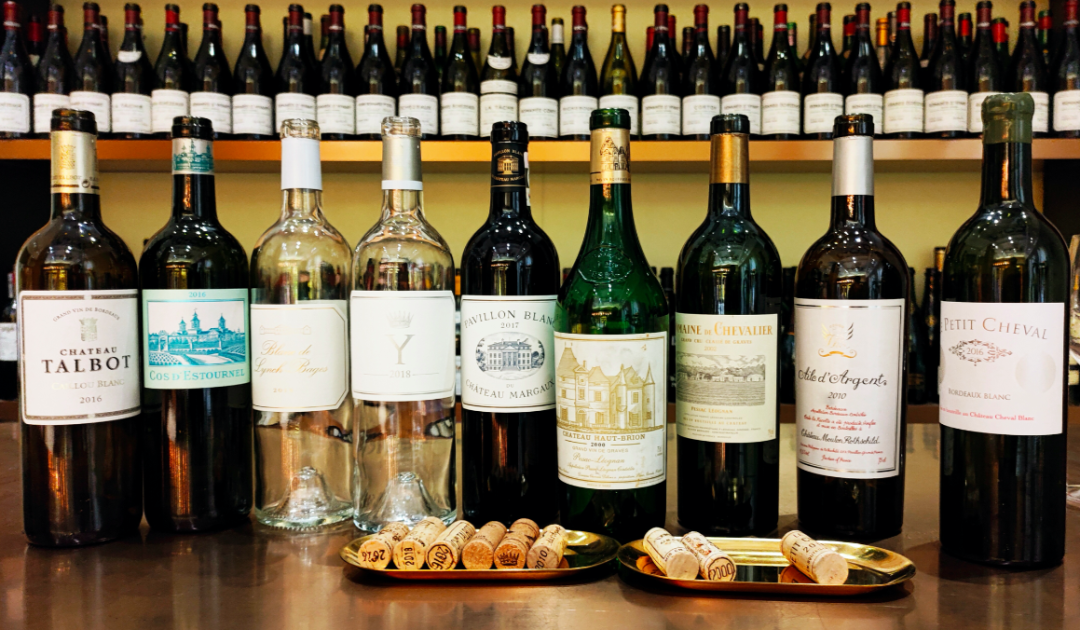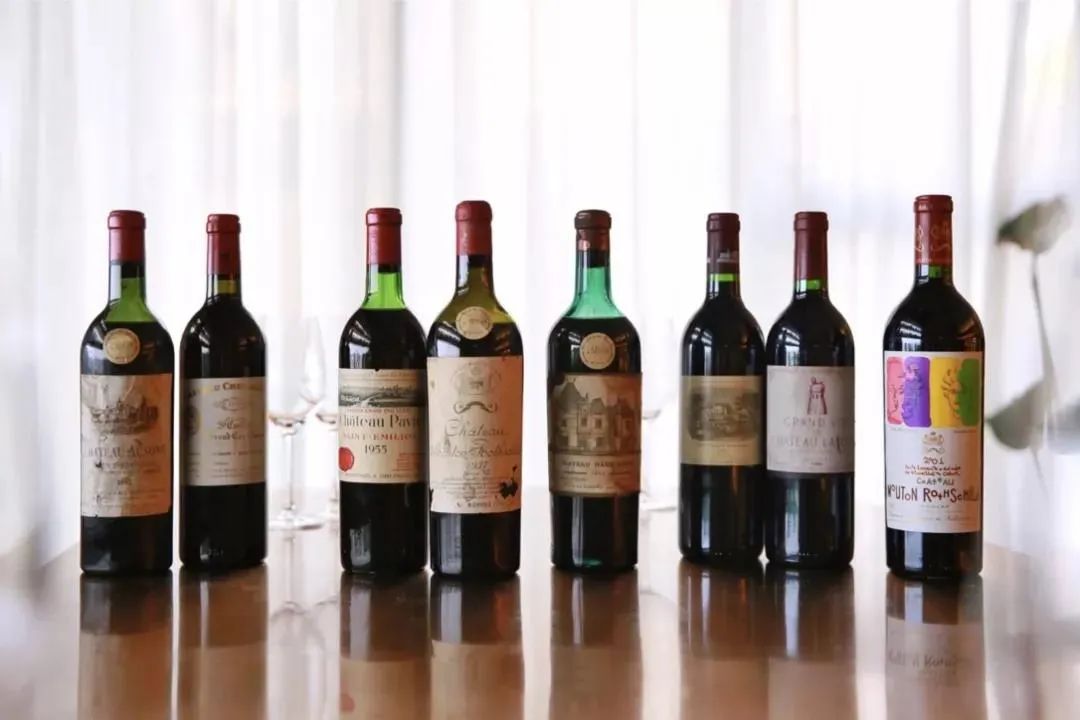A lover of all the world’s terroir wines, I’ve always marvelled at the diversity of Bordeaux terroirs. A happy and dynamic sibling rivalry meant that when we were young, my brother was “Bordeaux” and I was “Burgundy”. Coming from the same village where my maternal grandfather made ‘Pouilly Blanc Fumé’, Didier Dagueneau and I set up an ‘oeno-club’ in the 1980s, bringing together around thirty people every month to celebrate all the great wines of the day. With the help of Jean Bisson, then director of the INRA viticultural station at Cosne-sur-Loire and a member of our Pouilly-Sancerre wine club, who was also from Bordeaux, we were able to organize a number of Bordeaux wine tastings, featuring some of the most precious bottles: Ausone, Cheval Blanc, Petrus, Margaux, Latour, Haut-Brion, not forgetting Yquem and Guiraud. In this way, I was able to witness, in Bordeaux wine, the transition from the dominance of fine wine to that of a wine born out of the construction of a taste; but also, the transition from expensive but accessible prestigious wines to wines that cheerfully exceeded 1,000 euros a bottle; and last but not least, later still to what is now known as “Bordeaux-bashing”. How can we interpret this development over the last forty years?

Bordeaux and Burgundy, different ways of developing wines
In Burgundy, Champagne, the Rhône, the Loire and Bordeaux, the world of winegrowing believed in the introduction of chemical methods for working the soil, as well as in the introduction of interventionist and corrective oenology in the cellars and wineries. The increasingly mediocre quality of the grapes, as a result of both chemical viticulture and the massive introduction of clones, meant that the oenologist had to become the undisputed master of modern viticulture. But why did he reign supreme in Bordeaux and not in Burgundy? The majority of Burgundy estates are much smaller, and the master of ceremonies, both in the vineyard and in the winery, is the winemaker. The oenologist Guy Accad, praised by one of the most influential French critics of the time (and Robert Parker too), had a few years of success there, working for a small number of winegrowers in Vosne-Romanée and Morey-Saint-Denis. At the end of the 1980s, under the impetus of the now legendary winemaker Henri Jayer, the “terroir awakened”, bringing with him the young winemakers of the day: Dominique Lafon, Christophe Roumier, Denis Mortet, Philippe Charlopin, Véronique Drouhin, Nadine Gublin… They were joined by the young sons of the bourgeoisie who took over the historic family estates, Jean-Nicolas Méo, Thibault Liger-Belair, Louis-Michel Liger-Belair… Under the leadership of directors of the great Burgundy houses, such as Bernard Hervet at Bouchard Père et Fils, or Pierre-Henry Gagey at Jadot, a return to the “climats” was the rule for all winegrowing families! The values proclaimed by Henri Jayer (“Everything begins in the vineyard; learn oenology to learn how to do without it; to make great wine, it’s quite simple, you just have to let Nature do its work“), were in orbit. This new dynamic enabled Burgundy wines to make their mark in a world where “small is beautiful” and naturalness were becoming increasingly fashionable.
Meanwhile, Bordeaux was going in a different direction. It’s worth remembering that in the 1930s, Bordeaux chose the ‘Château’ as the organizing principle for its viticulture, while Champagne chose the brand, and Burgundy clung to the primacy of terroir and the hierarchy that reigns there, taking up and refining the classification of ‘climats’ into four classes, initiated by Jules Lavalle in 1855. The most prestigious châteaux in Bordeaux belong to families or financial groups that do not cultivate vines directly. The most famous were classified, also in 1855, initially provisionally, but confirmed in 1935. There is a division of labour between those who work in the vineyards and those who work in the cellars. Emile Peynaud, considered to be “the father of modern oenology”, was a consultant to a number of estates, paving the way for others who now have an impressive number of châteaux as clients. If you want to make progress, or get good scores equal to or higher than 95 out of 100, you need to enlist the services of the most reputed…

The grape variety or the place?
What is essential to understand, however, is that in Bordeaux, terroir and grape varieties take a back seat to the taste of the Château. It’s a conscious cultural choice. Wine-lovers do not recognise a “climat”, as in Burgundy, but a “château”. What’s more, the legislator has not prevented the “château” from expanding. Château Latour absorbed Château La Bécasse, for example. All you have to do is stay within the communal production area. If you’re in Saint-Estèphe, there’s no question of increasing the vineyard area of your château in Pauillac or Saint-Julien. Since 1855, only one château classified that year has kept its original surface area; the others have often increased it significantly.
This philosophy has never prevented the production of fine wines in Bordeaux, wines that Jefferson was already enjoying. Indeed, if there is a diversity of grape varieties in Bordeaux, it is because there is a diversity of terroirs. Before the phylloxera epidemic, there were at least thirty of them, and each enhanced its own type of soil and subsoil. Cabernet Sauvignon, which originated in the Graves region, thrives on gravelly, draining, rather acidic soils with good exposure. Petit Verdot cannot survive on such soils and prefers fertile, warm, well-exposed Palu soils. Castets buds late and ripens quickly… With a wide variety of grape varieties, each château in the Bordeaux terroirs is playing out a symphony, provided that each variety plays its part in the right place! Cabernet Sauvignon, Cabernet Franc, Carmenère, Castets, Merlot, Petit Verdot, Pardotte… have all found their preferred terroir over the course of history. This is a different cultural choice to the one made in Burgundy, where there is a single clay-limestone unit allowing a single grape variety to be chosen, capable of expressing the diversity of flavour expression of the “climats” created by the Benedictine monks according to the faults, differences in exposure or altitude, differences in silt, stoniness, etc…
So why this shift from fine wines capable of expressing a local taste message, to wines that are more and more the product of the construction of a taste? It’s the relationship between man and place, in terms of viticulture, that is at stake. Until the last world war, great wine was “consubstantially” associated with its place of birth. Wherever the ancients had located a ‘high place’ to plant vines, they had found the right grape variety, or varieties, to serve it. In this way, these wines consistently delivered an original taste message.
After the last world war, the whole world wanted to produce wine. All the American states produce wine, except one – Alaska! In Australia, the wine industry was born, supported by the state. Chile flooded the international markets with wines made from noble European grape varieties at low prices… They didn’t hesitate to call on the best French oenologists to accompany this worldwide craze for wine, which had become the flagship drink of globalisation. And so began the industry of “varietal” wines under the brand name, a wine that was becoming increasingly technological. Of course, the most prominent European grape varieties were called upon, those that had made the great wines of Burgundy, Bordeaux, the Rhône Valley and Barolo famous: Cabernet Sauvignon, Cabernet Franc, Pinot, Syrah, Mourvèdre, Malbec, Nebbiolo, Sangiovese, Chardonnay, Sauvignon, Riesling, Viognier, Chenin… All the latest viticultural and oenological technologies were called upon to the rescue. With the help of powerful marketing, consumers could be led to believe that great Bordeaux and great Burgundy could be made anywhere in the world. Instead of claiming a place, but a grape variety, the great American wine increasingly claimed a woody, toasty taste as the hallmark of a great wine. As a result, faced with the growing demand for such wines, the wine industry created “staves”, planks of wood “toasted” according to the supposed tastes of consumers, to line the vats and produce ever more.
The combination of an influential critic and a talented oenologist
Why did the Bordeaux wine industry allow itself to be tempted by this new way of making wine? Why have the great local wines of Bordeaux been allowed to deviate from their natural trajectory through oenological intervention? All it took was one American taster, who quickly built up an international reputation, in association with some excellent oenologists, to change the focus from a fine wine to a wine that was the product of the construction of a taste. It was the spirit of the age. Man is stronger than nature, marketing is more powerful than ancient reputations. At the turn of the twentieth and twenty-first centuries, researchers were even called in to assert that terroir did not exist, that it was a French invention, and a Burgundian one in particular, to make people believe in the superiority of French wines. It’s important to remember that in 1984, an American magazine wrote: “Soil for wine is bullshit”.
The 1982 Bordeaux vintage appealed to the world’s most influential future wine critic, Robert Parker, for its dark colour, generous fruit, opulence, sweetness and imposing tannic structure. This was confirmed in the bottle, as the American market became the biggest buyer of Bordeaux wines, reviving the wines that had disappointed in the 1970s because they were considered too ‘thin’. Historical hierarchies were overturned by the score out of 100, and all the wines in the world that passed 95 out of 100 were judged “extraordinary”, the assurance of worldwide success, with prices increasing threefold or even tenfold across the Atlantic. There’s no established hierarchy that doesn’t deserve to be re-examined – that’s the new approach to great wine! Impressed during his time at university by the battles waged by the lawyer Ralph Nader against the big industrial firms, who initiated consumerism, the creator of the Wine Advocate introduced this approach to the world of wine. He went on to become the world’s most respected wine critic. The star oenologists of Bordeaux became “flight-winemakers”. Importers, brokers and major clients waited for the Wine Advocate to be published before placing their purchase orders…
Showcasing wine in cathedrals
To showcase their oenological genius, Californian wine producers have built monumental wineries in a variety of styles, from reconstructions of fortified castles and Greek temples to futuristic buildings. Robert Mondavi teamed up with Philippe de Rothschild to create Opus One, a magnificent setting that blends into the landscape while standing out as an architectural masterpiece. In 1981, Christian Mouex founded Dominus in Yountville, in the Napa Valley, and in 1997 built a winery masterfully designed by two visionary Swiss architects, Herzog and de Meuron. Bordeaux has also embraced the idea, flanking a number of historic châteaux with majestic wineries. Ricardo Bofill led the way with the construction of a round cellar at Château Lafite-Rothschild in the Médoc in 1988. In 2013, Jean Nouvel designed a rectangular vat room covered in Bordeaux red stainless steel slats at Château La Dominique in Saint-Emilion. Bernard Mazières has built numerous buildings, in particular for Châteaux Latour, Petrus, Mouton Rothschild and Yquem. Grands crus classés in Bordeaux and grands crus classés in California, made from the same grape varieties, fight the same battle. For several decades, the focus has been on vinification, ageing and staging. Distinguished visitors are welcomed in the cellars and châteaux, and professional tastings are organised in majestic salons.

A focus on grape variety and oenological prowess
The operation was easier to carry out in Bordeaux than in Burgundy, because the tradition there is of plural grape varieties. We’ve forgotten that multiple grape varieties are linked to the diversity of terroirs in Bordeaux, whereas in Burgundy there is a unity of clay-limestone terroir, a unity of climate and even a unity of exposure, mostly due east, allowing a single grape variety to be the translator of the place. We’ve forgotten that it’s not the grape variety, or the barrel, that determines the consistency, suppleness, viscosity, texture and sapidity of a wine, but the terroir. A predominantly clay soil produces more consistency than a predominantly limestone soil, for example. As a result, we saw a tenfold increase in the area planted with Merlot over a period of thirty years, as it was considered to give the wine more roundness and smoothness. In short, the focus on the grape variety took precedence over the focus on the place, which requires a grape variety that is perfectly suited to it.
At the same time, all the oenological procedures available in oenological laboratories could be used. The University of Bordeaux brought great oenologists into orbit, as did the University of Davis in California, with an essential focus on organic chemistry, which allowed the introduction of various substances that were supposed to ‘enrich’ the wine. It’s hard to find wines fermented with their indigenous yeasts, for example, when Henri Jayer reminded us that as soon as you use selected yeasts, you start to distance yourself from the terroir. In the film Mondovino, an official selection at the Cannes Film Festival in 2004, we all remember the sequence with the famous consultant, all smiles, in his big Mercedes car, driving from château to château to ‘micro-bubble’ the barrels!
Bordeaux and Burgundy, a new-found closeness?
In 2015, when Burgundy had its “climats” classified as a UNESCO World Heritage Site as “the cradle and archetype of terroir-based winegrowing in the world”, the Bordeaux region was suffering from “Bordeaux-bashing”. Fortunately, the terroirs of Bordeaux have been awakened by Pascal Delbeck, a member of the Union des Gens de Métiers (UGM) created by Didier Dagueneau, followed by Stéphane Derenoncourt who, from 2016, dared to present the wines of the Châteaux where he works as a consultant, by terroir. Alain Mouex committed himself to biodynamic viticulture in 2002, Jean-Michel Comme to Pontet-Canet in 2010, Bérénice Lurton shortly afterwards, Pierre Lurton to Cheval Blanc in agroforestry… The troublemaker Loïc Pasquet rediscovered, in the Bordeaux archives, the texts that showed that there are sandy soils in Graves where phylloxera could never strike, allowing him to replant his entire vineyard, opening up a very promising new avenue, with prices soaring. Just as Champagne reminded us that “Champagne is only made in Champagne”, Bordeaux can once again remind us that Bordeaux wines are only made in Bordeaux terroirs. After equipping themselves with remarkable, functional cellars, the Bordeaux châteaux are refocusing on working the vines. The return of the fine wine that delivers the taste message of its birthplace is underway. There is no such thing as a fine wine other than its place of birth. Advertising Sauternes as a cocktail, with or without ice, should be avoided! On the contrary, it’s important to point out loud and clear that the Sauternes region is home to some of the world’s finest wine-growing areas dedicated to sweet and syrupy wines.
Bibliography for further reading :
- Guyot (J.), Etude des vignobles de France, 1868.
- Jullien (A.), Topographie de tous les vignobles connus, 1816.
- Pitte (J.R.), Bordeaux/Bourgogne, des passions rivales.
- Rigaux (J.), Le goût retrouvé du vin de Bordeaux, Actes Sud, 2019.
- Rigaux (J.), Le monde du vin aujourd’hui, Terre en Vues, 2020.

 中文
中文



